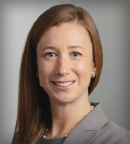Is regular surveillance with mammography important in older patients with breast cancer and a shortened life expectancy? A study of 44,475 patients with breast cancer found the practice—which may yield more harms than benefits—to be common.
This study is unique in that it examined surveillance patterns among older patients, not grouped by age but by estimated remaining life expectancy. Over the course of the 10-year study, more than half the women considered to have a life expectancy of less than 1 year underwent at least one mammogram within 12 months of death, reported Elizabeth Berger, MD, MS, Assistant Professor of Surgery, Yale University School of Medicine, New Haven, Connecticut, at the 2023 American Society of Breast Surgeons Annual Meeting.1

“Surveillance is common—most common among women with the longest life expectancies but still not uncommon among women with a short life expectancy.”— Elizabeth Berger, MD, MS
Tweet this quote
“Surveillance is common—most common among women with the longest life expectancies but still not uncommon among women with a short life expectancy,” Dr. Berger said.
Annual mammograms are frequently performed on elderly women treated for breast cancer, even those deemed to be at small risk for a recurrent or new breast cancer and those with competing mortality risks based on age or comorbidities.
“If an elderly woman is in poor health and has significant competing mortality risks compared to breast cancer, annual mammography may not be necessary. Ongoing surveillance mammography in these patients may lead to overdiagnosis and overtreatment of cancers that potentially would not harm patients if left untreated,” Dr. Berger said. She noted that such overzealous surveillance may erode quality of life and incur costs to patients and the health-care system, minus the benefit.
About the Study
The investigators sought to characterize current mammography surveillance practice patterns across the United States for elderly women treated for breast cancer, taking life expectancy into consideration. They analyzed 44,475 women entered into the Surveillance, Epidemiology, and End Results (SEER) and Medicare registries from 2003 to 2007. All were aged 67 or older at the time they were diagnosed with a first, nonmetastatic breast cancer. They were followed from 1 year postdiagnosis until death, the development of a second breast cancer, or the study’s conclusion in 2017 (ie, for around 10 years). Dr. Berger and her team were able to ensure the subjects were receiving mammograms for surveillance and not to evaluate complaints.
Estimates of life expectancy were based on age, sex, and comorbidities. The primary endpoints were receipt of surveillance mammography and occurrence of a second primary breast cancer.
In the study cohort, 55% of women had at least one comorbidity and 16% had three or more. Life expectancy was less than 5 years for 26%, 6 to 10 years for 36%, and more than 10 years for 38%. Most patients (~33,000) had stage I or II breast cancer, and 72% had hormone receptor–positive disease. A small subset (8,706) had ductal carcinoma in situ.
Small Cumulative Incidence of Second Breast Cancer
Over the 10 years of follow-up, the cumulative incidence of second breast cancers was small: 3.7% among women with a life expectancy less than 5 years, 4.9% for those with a life expectancy of 6 to 10 years, and 7.6% for those with a life expectancy of more than 10 years.
By subtype, in women with a life expectancy of less than 5 years, the incidence of a second primary was 4% for those with triple-negative breast cancer and 3% for those with hormone receptor–positive tumors. For those with a life expectancy of more than 10 years, second primaries were diagnosed in 9% and 7% for these respective subtypes.
Surveillance Remained Common
Significantly, 51% of women with a life expectancy of less than 1 year received at least one mammogram within 12 months of death. In patients with a life expectancy of 6 to 10 years, 82% had one or more, and 62% underwent five mammographic exams, Dr. Berger reported.
“All the patients had a very high incidence of surveillance mammography years after their initial diagnosis. Even 10 years later, about 40% of the elderly population were still getting mammograms, well into their 80s and 90s. Even in the population with a life expectancy of less than 1 year, 3 years after treatment, about 40% were still getting surveillance mammography,” she said.
KEY POINTS
A study of 44,475 older breast cancer survivors concluded that surveillance mammography is overused.
The risk of a second primary breast cancer was very small, and a large portion of women had competing mortality risks that rendered regular mammography unnecessary.
Dr. Berger and her team have recently received funding to begin evaluating the potential benefits and harms of this practice, examining the incidence of false-positives, overdiagnosis, and overtreatment in this cohort of women.
Need to Think About Life Expectancy
According to Dr. Berger, in planning post–breast cancer care, clinicians should consider life expectancy, “totally recognizing that it’s hard to calculate this” but understanding that patients can differ widely in terms of overall health.
“We must think about competing mortality risks when we consider surveillance mammography in this population. It’s part of our responsibility as breast cancer providers to consider the value in thinking about ongoing mammography in these women,” she said. “For women with significant competing mortality risks unlikely to die of a breast cancer diagnosed at an older age, mammography brings little benefit.”
DISCLOSURE: Dr. Berger reported no conflicts of interest.
REFERENCE
1. Berger E, Long J, Sheffrin M, et al: Patterns of mammographic surveillance in elderly women with breast cancer. 2023 American Society of Breast Surgeons Annual Meeting. Abstract 1388238. Presented April 27, 2023.


